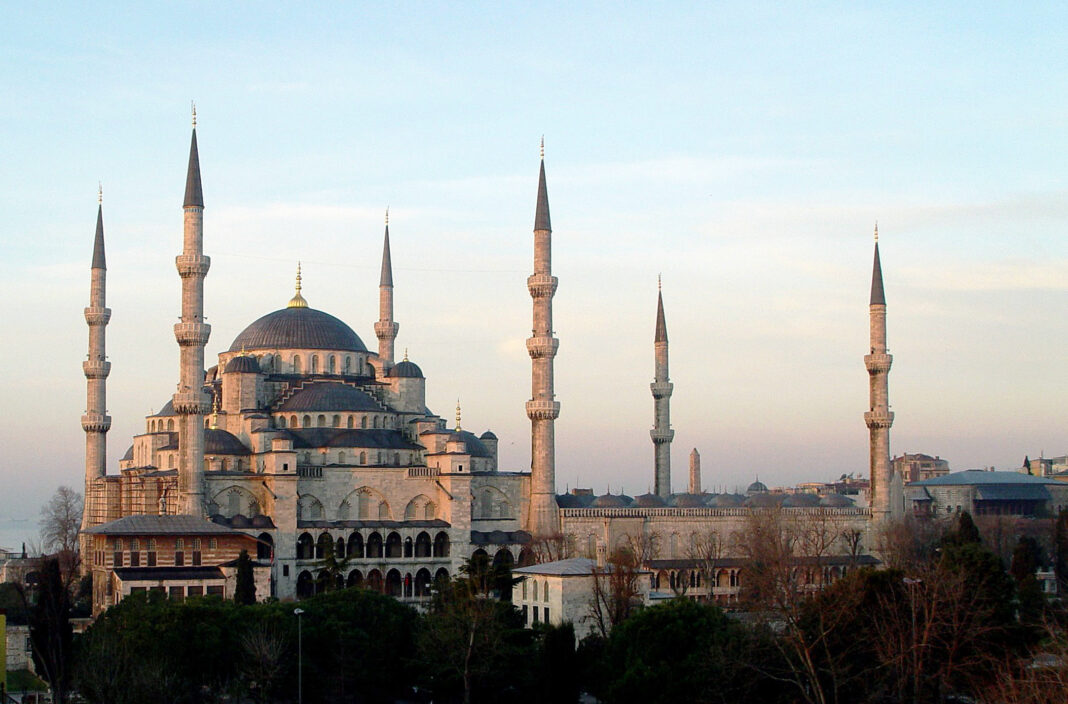Islam is well-known for its intellectual and cultural development, owing to contributions made by Muslims in Astronomy, Mathematics, Medicine, Literature, Art and Philosophy. But what you’d found equally striking and extraordinary is the awe-inspiring Architecture of Islamic History.
Enhanced with intricate Arabic calligraphy engraved on pillars and walls, beautifully carved mosaics, arabesques, minarets with precious & semi-precious stone carvings— Islamic Architecture is known throughout the world for its immense techniques, styles, and tones that it blended, both in secular and religious manners.
Although Islamic Architecture is mostly praised and located within the Middle East and Indian Subcontinent, it is also equally praise-worthy in the Spanish peninsula and the nearby areas, most of it was established and crafted during the time of Muslim Rule in these territories.
And, if you love Islamic History, it should be on your list to visit some of these places that show a combination of the events of the Islamic times.
The Architect of Byzantine and Ottoman, of Islam and Christianity, and of Locals and Foreigners are some of the examples of adaptations and blend of Architectures.
1. The Great Mosque-Cathedral of Cordoba

Muslims ruled parts of the Iberian Peninsula called “Al Andalus” for more than a century. These included Spain, Portugal and parts of Southern France. The stunning architecture is the perfect portrayal of the two dominant communities in Andalusia- Muslims and Christians.
Belonging to the Umayyad Dynasty, which had to surrender in Damascus following the rise of Abbasids, Abd al-Rahman I gained control of the region and made Cordoba his capital. His successors continued to add to the style and beauty of the Mosque of Cordoba.
Today, the Mosque-Cathedral is a stunning fusion of two cultures. It has hints of Renaissance Architecture along with a blend of Islamic Mosque-style.
2. Royal Alcázar de Seville

One other example of Islamic architecture in the Spanish region is this magnificent royal palace was originally called Al-Qasr Al-Muriq. Located in Southern Spain, in the city of Seville, this palace was built by Muslim rulers who gained control during the 8th Century. However, it was converted into a palace for Peter of Castille.
The site has a mixture of Renaissance and Gothic style. It is considered to be the most refined example of Mudejar Art- which was basically an application of the technique and motifs of Islamic Architecture with that of Romanesque and Renaissance.
3. The Alhambra in Granada

An eye-catching site of buildings and gardens, the Alhambra is one of the best-preserved examples of Islamic Architecture in Andalusia. Built around a huge area, the fortress’ name is derived from the Arabic word meaning “red one.”
Declared as a UNESCO World Heritage Site, it has hints of Moorish Architecture with mosaics, arabesques, and geometric motifs.
4. The Blue Mosque

Also known as the Sultan Ahmed Mosque, the Blue Mosque is a historical masjid or mosque built during the time of the Ottoman Empire. The site was built during the time of Ahmed I- located near another prominent mosque in Turkey, Hagia Sophia.
The Blue Mosque is still functioning and attracts a large number of Muslim worshippers from across the globe. Marked as a World Heritage Site, it showcases a mixture of Byzantine and Ottoman artistic style.
The hand-painted blue tiles in the upper area of the interior of the mosque are one of the most striking features of this building. It is one of the most renowned buildings of the classical period.
5. Hagia Sophia

Historically built as a Greek Orthodox Church, Hagia Sophia was transformed into a mosque when the Conquest of Constantinople took place in 1453.
It was a museum since 1920 but was converted into a functioning mosque once again in 2020. Since then, a large number of muslim tourists have visited it.
Often called as the epitome of “Byzantine Architecture,” its conversion took place under the regime of Mehmed the Conqueror. Minarets, Mihrab and Minbar were included while iconographies, bapistry, bells and altars were plastered over or removed from the site.









